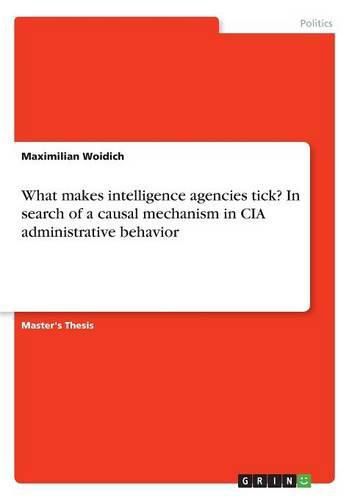Readings Newsletter
Become a Readings Member to make your shopping experience even easier.
Sign in or sign up for free!
You’re not far away from qualifying for FREE standard shipping within Australia
You’ve qualified for FREE standard shipping within Australia
The cart is loading…






Master’s Thesis from the year 2016 in the subject Politics - International Politics - General and Theories, grade: 1,0, University of Constance, course: International Administration and Conflict Management, language: English, abstract: This study applies theory-building causal process tracing to the institutionalization of the CIA’s EIT programme. It thereby identifies a casual mechanism endemic to a public bureaucracy that functions as an intelligence agency. Secrecy practices and the nature of covert action create an imperfect information market, wherein informal influence is concentrated in small groups. The actions of these small groups might hamper organizational learning and lead to organizational dysfunctions. In the case of the CIA this is shown to be relevant because of the central role the agency’s Counterterrorism Center played in the causal chain leading up to the EIT institutionalization. Future studies should test this mechanism in the context of intelligence agencies other than the CIA.
$9.00 standard shipping within Australia
FREE standard shipping within Australia for orders over $100.00
Express & International shipping calculated at checkout
Master’s Thesis from the year 2016 in the subject Politics - International Politics - General and Theories, grade: 1,0, University of Constance, course: International Administration and Conflict Management, language: English, abstract: This study applies theory-building causal process tracing to the institutionalization of the CIA’s EIT programme. It thereby identifies a casual mechanism endemic to a public bureaucracy that functions as an intelligence agency. Secrecy practices and the nature of covert action create an imperfect information market, wherein informal influence is concentrated in small groups. The actions of these small groups might hamper organizational learning and lead to organizational dysfunctions. In the case of the CIA this is shown to be relevant because of the central role the agency’s Counterterrorism Center played in the causal chain leading up to the EIT institutionalization. Future studies should test this mechanism in the context of intelligence agencies other than the CIA.